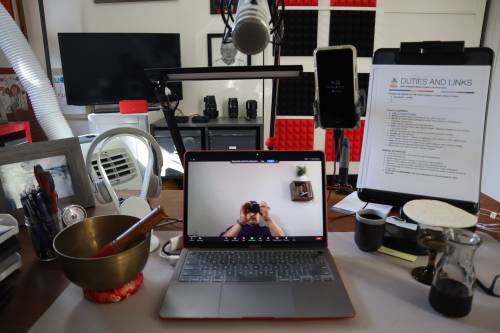
With houses of worship across the country closing because of the COVID-19 pandemic, congregations resorted to livestreaming their worship services. Livestreaming, the broadcasting of live video to an audience over the internet, has rapidly increased because the most popular social media platforms make it easier to livestream.
Rather you chose to livestream on Facebook, YouTube or another platform, the music you’re using in your service has to be copyright compliant. Like all intellectual property, the music you perform in a livestream service is subject to copyright protection.
No matter what platform you select for livestreaming, make sure you are compliant with current licensing regulations.
The following information will focus on using copyrighted music on Facebook and YouTube.
Using copyrighted music on Facebook
As of 2018, Facebook had partnered with Warner Music Group, Universal Music Group and Sony/ATV Music Publishing on licensing agreements that enabled use of these companies’ music by users on Facebook platforms (for instance, in user-created videos) and paved a way for musicians to profit off the use of their music.
However, you are still limited in the amount of recorded music you’re permitted to livestream. This information was provided by Facebook in a set of updated guidelines published in late 2020 on both Instagram and Facebook. Here are the main takeaways:
- Live performances are permitted. According to Facebook, music in stories and traditional live music performances (e.g., filming an artist or band performing live) is allowed.
- There is some question as it relates to full-length recorded tracks. Facebook writes, “The greater the number of full-length recorded tracks in a video, the more likely it may be limited.” By limited, Facebook means the content may be made unavailable in certain areas, muted or blocked entirely.
- Facebook does allow short clips of music, although they don’t list any specifications or definition of what’s considered “short.”
- Audio without a visual component is not permitted. Every video with music must have some visual component. Basically, you can’t treat Facebook platforms like music-sharing platforms.
Facebook uses audio “fingerprinting” to detect the use of copyrighted music. Because of this process, recorded tracks and pure audio are way more likely to pose problems than live performances and short clips.
To ensure that your post will not be taken down, you may want to obtain the legal right to stream prerecorded music on Facebook. For example, lots of churches purchase CCLI Streaming Plus licenses in order to secure the rights to stream covers or prerecorded music from labels like Hillsong, Bethel Music and Sparrow.
Although you legally have the right to stream the music, that does not mean that Facebook won’t limit your videos by muting them, blocking them or making them unavailable in certain areas. While you’re not breaking copyright law, Facebook may still take down your videos simply because its takedowns happen automatically when recorded music is recognized.
Using copyrighted music on YouTube
YouTube automates flags and takedowns for videos that contain copyrighted music through their Content ID system. Whether you have the right licenses to include copyrighted music in your live or recorded videos or you don’t, your content may still get what YouTube calls a claim or a strike. Understanding claims and strikes helps reveal what’s OK to stream and publish on YouTube and what isn’t.
- Claim: Your video will get a Content ID claim when it contains copyrighted content that matches content within the Content ID system. Automatically generated, claims do not necessarily mean you’re in trouble for posting the content that you did.
- Strike: Your video will get a Content ID strike when the copyright owner submits a takedown request for your video. As they say, three strikes and you’re out. Once you’ve gotten three strikes, your account can be terminated, all your videos will be taken down and you won’t be allowed to make new channels.
Copyright owners get to decide what happens when content in a video on YouTube matches a work they own. When a match is found, the video gets a Content ID claim.
Strikes are more serious than claims. So, make sure you have the correct licenses on hand.
You can’t get a Content ID claim until after your livestream is over. YouTube scans livestreams for copyrighted content as they’re streaming. If copyrighted content is detected, YouTube may replace your stream with a placeholder, warn you to stop streaming, interrupt or terminate your stream.